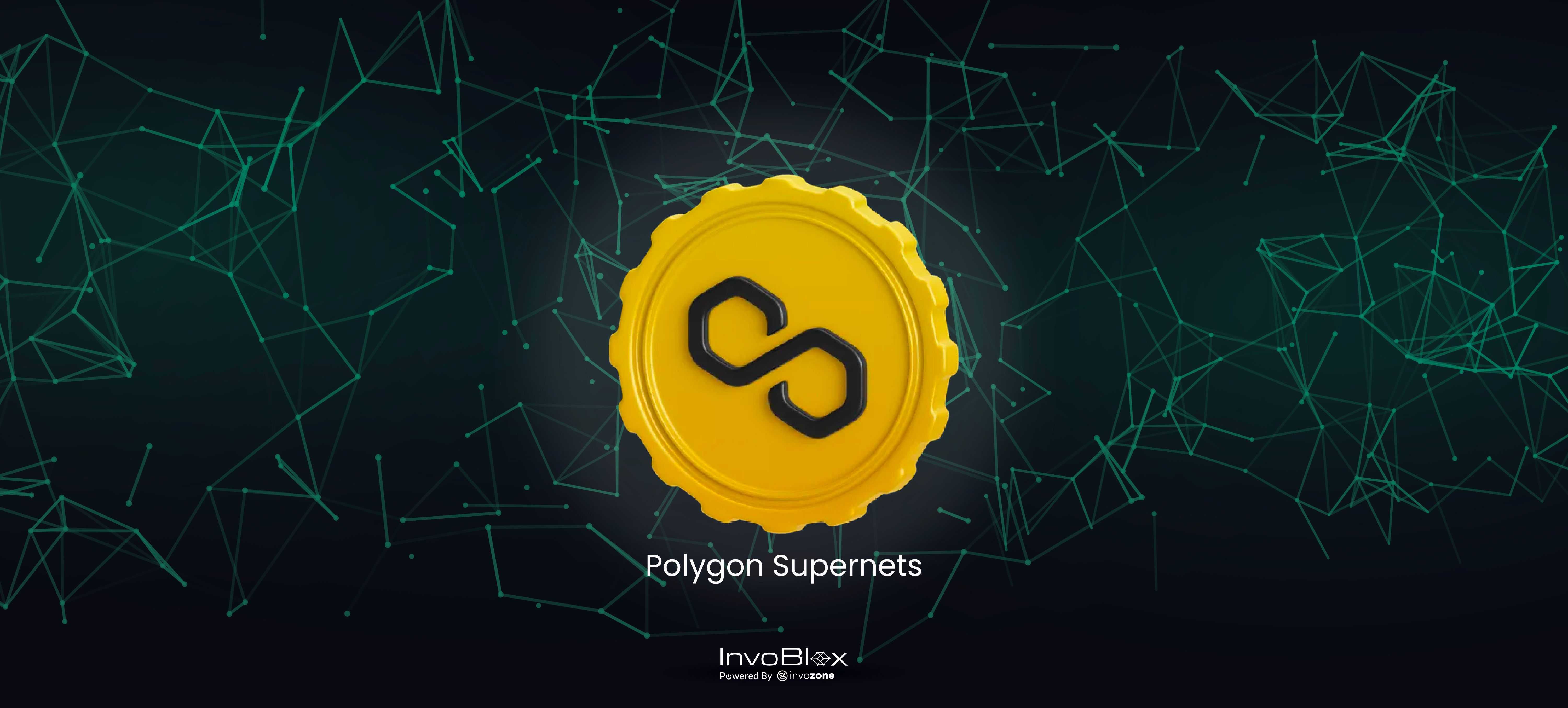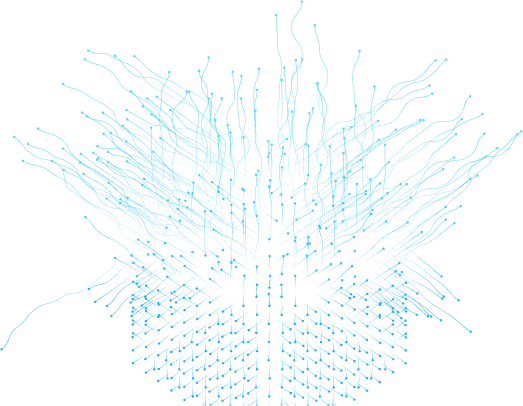
How Polygon Supernets Enhance Security and Performance
Table of Contents
Scalability has always been an inhibiting factor of blockchain technology. The original blockchain design didn't anticipate its popularity or if the protocol and rules would work as it grew.
As more and more people switch to using blockchain technology, the traditional blockchain networks have seen consistent network issues. These are particularly visible in longer transaction times and higher gas fees.
The time and fees for transactions have increased as more transactions occur. This means people must pay a significant amount to validate their transactions quickly. This means that now people have to pay a substantial amount to have their transactions swiftly validated.
This article looks into how Polygon has improved user experience by adapting supernets.
What is Polygon Edge?
Polygon Edge is Polygon’s L2 solution furthered. It is a multi-chain Ethereum gateway. Polygon Edge provides a scalable solution, customization ability, Ethereum Virtual Machine (EVM) chains, and L2 solutions. The design of this is specifically for providing developers with the ability to reference blockchains.
Polygon Edge is the solution for scalability, particularly in the Ethereum blockchain architecture. Its modular architecture allows users to select and stack modules according to their requirements. Combining these modules provides a more efficient blockchain than traditional ones.
However, there were some problems faced by Polygon edges. Polygon Edge faced security issues primarily.
Because bootstrapping the validator set was hard, it caused security issues. On top of that, it also consumes a significant amount of one’s bandwidth. Technical complications and security concerns led to Polygon Edge enhancing itself in the form of Polygon Supernets.
What are Supernets?
Supernets are clusters of a network that connect to achieve various functionalities. Supernets are great for sharing data and collaborating. They help different network groups communicate and exchange data.
Supernets can communicate with other Supernets and the Ethereum blockchain's main net to exchange messages and data. They are part of Polygon’s mainnet (MATIC).
Polygon Supernets
Polygon supernets are a network that works like a blockchain on the Polygon edge. A Polygon supernet is a unique network that functions similarly to a blockchain on the Polygon edge.
It revolutionizes the blockchain industry by empowering users to create their own customized blockchain for specific requirements. Additionally, it enables them to set up and distinctly install this blockchain, deviating from the conventional approach.
Polygon supernets boast scalability, and offer optimization in speed, performance, and throughput, along with other customization options. Using supernets, users can integrate web3 applications into dedicated networks.
Polygon Supernets architecture
Polygon Supernets use a native bridge to connect with the Polygon Pos mainnet. This allows them to inherit the security from it. It extends the block space of the mainnet as well.
We can divide the Polygon supernets architecture into three major components. They can be further categorized into nine sub-components.
Traditional Components
A blockchain network traditionally includes these components.
-
Blockchain: The blockchain is where the entire system aggregates together. It curates state transitions.
-
Consensus: The consensus mechanism used in Polygon, and by extension Polygon Supernets, is PolyBFT. It consists of a consensus engine, IBFT 2.0, and a consensus protocol responsible for staking and bridging.
-
TxPool: TxPool or transaction pool is where the transitions pool from the various parts of the system. In supernets, transactions can be coming in from multiple components.
-
Runtime: Runtime is the Ethereum Virtual Machine where the execution of smart contracts takes place.
Supernet Components
These are the components that are part of the system as a result of supernets,
-
Bridge: The bridge mechanism is enabled by the consensus mechanism. It allows the passing of messages between a supernet and any other PoS blockchain.
-
Mempool: This allows all the validators of a transaction to aggregate their signatures into one signature, which represents all the validators.
Connecting Components
-
Libp2p: This provides the networking layer 0 blockchain for the supernets. It is designed for peer-to-peer architectures. It serves as the underlying network.
-
JSON RPC: This is the API layer to the blockchain.
-
gRPC: This is the networking part of the system. It enables node operators to interact with clients with ease.
What Polygon Supernets offer
There are a number of benefits to Polygon supernets aside from offering a solution to the blockchain scalability problem. They include interoperability, enhancing the performance of web3 applications, and efficient communication, amongst others. Let’s take a look a few further.
-
Dedicated
You can design a supernet to run a customized blockchain for a particular project. Web3 applications benefit from this dedicated system. They also allow storage and transfer of data. For example, hospitals can use a supernet to connect and share medical data of patients.
-
Security
As Polygon supernets have a native bridge to Polygon Edge’s MATIC, it leverages the security from it. The “shared security” concept of MATIC comes into play here. Web3 projects and Polygon Supernet users can use MATIC's security features and access a reliable Proof of Stake validator group.
-
Connection to Ethereum
Polygon supernets connect to the Ethereum mainnet, allowing web3 apps on Polygon to also work on the Ethereum network. This makes Polygon supernet capabilities more extensive.
-
Monitoring
Edge-certified partners are available to monitor Polygon Supernets to help cut down resource usage of Polygon Supernets users.
-
Utilization Modularity
Polygon Supernets can pick Polygon Edge's legos, thus enabling them to utilize any scaling architecture. This adds ease of use to the Polygon supernets.
Comparison with Avalanche Subnets
Another scalability solution is blockchain in the avalanche subnet.
Even though the numbers of avalanche subnets are better, Polygon supernet has its own advantages, as mentioned above.
Concluding Thoughts
As DeFi grows and blockchain becomes more popular, a scalable solution that gives control to the creator will be increasingly important.
Polygon supernets offer a scalable and practical solution. They overcome the limitations of traditional setups, including transaction throughput and gas fees. The Polygon Supernets will become more popular as the blockchain world grows due to their improved efficiency and customization options.
Table of Contents
Scalability has always been an inhibiting factor of blockchain technology. The original blockchain design didn't anticipate its popularity or if the protocol and rules would work as it grew.
As more and more people switch to using blockchain technology, the traditional blockchain networks have seen consistent network issues. These are particularly visible in longer transaction times and higher gas fees.
The time and fees for transactions have increased as more transactions occur. This means people must pay a significant amount to validate their transactions quickly. This means that now people have to pay a substantial amount to have their transactions swiftly validated.
This article looks into how Polygon has improved user experience by adapting supernets.
What is Polygon Edge?
Polygon Edge is Polygon’s L2 solution furthered. It is a multi-chain Ethereum gateway. Polygon Edge provides a scalable solution, customization ability, Ethereum Virtual Machine (EVM) chains, and L2 solutions. The design of this is specifically for providing developers with the ability to reference blockchains.
Polygon Edge is the solution for scalability, particularly in the Ethereum blockchain architecture. Its modular architecture allows users to select and stack modules according to their requirements. Combining these modules provides a more efficient blockchain than traditional ones.
However, there were some problems faced by Polygon edges. Polygon Edge faced security issues primarily.
Because bootstrapping the validator set was hard, it caused security issues. On top of that, it also consumes a significant amount of one’s bandwidth. Technical complications and security concerns led to Polygon Edge enhancing itself in the form of Polygon Supernets.
What are Supernets?
Supernets are clusters of a network that connect to achieve various functionalities. Supernets are great for sharing data and collaborating. They help different network groups communicate and exchange data.
Supernets can communicate with other Supernets and the Ethereum blockchain's main net to exchange messages and data. They are part of Polygon’s mainnet (MATIC).
Polygon Supernets
Polygon supernets are a network that works like a blockchain on the Polygon edge. A Polygon supernet is a unique network that functions similarly to a blockchain on the Polygon edge.
It revolutionizes the blockchain industry by empowering users to create their own customized blockchain for specific requirements. Additionally, it enables them to set up and distinctly install this blockchain, deviating from the conventional approach.
Polygon supernets boast scalability, and offer optimization in speed, performance, and throughput, along with other customization options. Using supernets, users can integrate web3 applications into dedicated networks.
Polygon Supernets architecture
Polygon Supernets use a native bridge to connect with the Polygon Pos mainnet. This allows them to inherit the security from it. It extends the block space of the mainnet as well.
We can divide the Polygon supernets architecture into three major components. They can be further categorized into nine sub-components.
Traditional Components
A blockchain network traditionally includes these components.
-
Blockchain: The blockchain is where the entire system aggregates together. It curates state transitions.
-
Consensus: The consensus mechanism used in Polygon, and by extension Polygon Supernets, is PolyBFT. It consists of a consensus engine, IBFT 2.0, and a consensus protocol responsible for staking and bridging.
-
TxPool: TxPool or transaction pool is where the transitions pool from the various parts of the system. In supernets, transactions can be coming in from multiple components.
-
Runtime: Runtime is the Ethereum Virtual Machine where the execution of smart contracts takes place.
Supernet Components
These are the components that are part of the system as a result of supernets,
-
Bridge: The bridge mechanism is enabled by the consensus mechanism. It allows the passing of messages between a supernet and any other PoS blockchain.
-
Mempool: This allows all the validators of a transaction to aggregate their signatures into one signature, which represents all the validators.
Connecting Components
-
Libp2p: This provides the networking layer 0 blockchain for the supernets. It is designed for peer-to-peer architectures. It serves as the underlying network.
-
JSON RPC: This is the API layer to the blockchain.
-
gRPC: This is the networking part of the system. It enables node operators to interact with clients with ease.
What Polygon Supernets offer
There are a number of benefits to Polygon supernets aside from offering a solution to the blockchain scalability problem. They include interoperability, enhancing the performance of web3 applications, and efficient communication, amongst others. Let’s take a look a few further.
-
Dedicated
You can design a supernet to run a customized blockchain for a particular project. Web3 applications benefit from this dedicated system. They also allow storage and transfer of data. For example, hospitals can use a supernet to connect and share medical data of patients.
-
Security
As Polygon supernets have a native bridge to Polygon Edge’s MATIC, it leverages the security from it. The “shared security” concept of MATIC comes into play here. Web3 projects and Polygon Supernet users can use MATIC's security features and access a reliable Proof of Stake validator group.
-
Connection to Ethereum
Polygon supernets connect to the Ethereum mainnet, allowing web3 apps on Polygon to also work on the Ethereum network. This makes Polygon supernet capabilities more extensive.
-
Monitoring
Edge-certified partners are available to monitor Polygon Supernets to help cut down resource usage of Polygon Supernets users.
-
Utilization Modularity
Polygon Supernets can pick Polygon Edge's legos, thus enabling them to utilize any scaling architecture. This adds ease of use to the Polygon supernets.
Comparison with Avalanche Subnets
Another scalability solution is blockchain in the avalanche subnet.
Even though the numbers of avalanche subnets are better, Polygon supernet has its own advantages, as mentioned above.
Concluding Thoughts
As DeFi grows and blockchain becomes more popular, a scalable solution that gives control to the creator will be increasingly important.
Polygon supernets offer a scalable and practical solution. They overcome the limitations of traditional setups, including transaction throughput and gas fees. The Polygon Supernets will become more popular as the blockchain world grows due to their improved efficiency and customization options.
FAQS
Supernet has the incorporation of EVM (Ethereum Virtual Machine), a widely understood tool in a dependable cryptographic circle, built-in. This signifies smart contracts made on a Supernet are EVM bytecodes compiled from a high-level language, such as Solidity.
Supernet Polygon Edge can begin as a sovereign Proof of Authority network and then transition into a Proof of Stake Network.
Supernets are clusters of connected networks that can be used for a variety of purposes, including data sharing and collaborative work, and can be useful for organizing large amounts of data and for facilitating communication between different groups of users.





